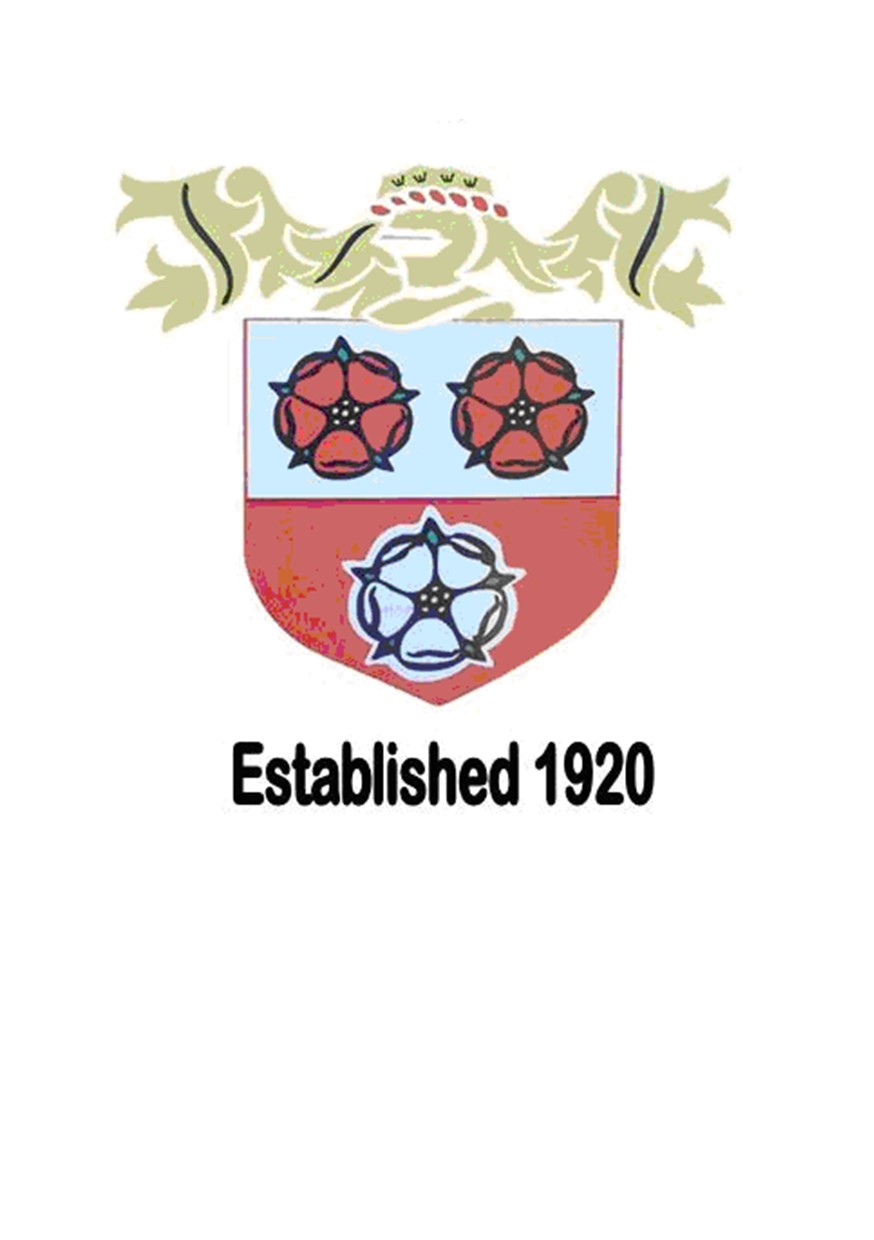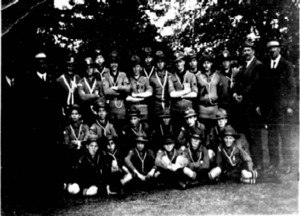
1925 to 1975 as Remembered by Bill Barnes
This chapter is drawn from the memoirs of Bill Barnes, who was a playing member of the Band from about 1925 through to 1985, and remained a Band Vice President until he passed-away in June 1995. Bill was a major influence on the Band, and was both principle cornet and Band Chairman for many years.
The earliest recollections of the Albion Band must have been that it was almost completely a “Brothers” Band, or a Band of Brothers. There were Bill, Charley and John Snook, sons of the Scoutmaster; and as far as the writer knows the original founder of the 1st Southampton troop of Scouts; then there were Bert and Eric Stockwell, Phil and Ian Cheek, Stan and Harold Thorn, George and Frank Pitcher, Berth and Jack Allen and Bill and Louis Bishop. There may have been more but if there were, they escape the writer’s memory. There were also some first cousins like Leslie Burgess and Louis Hawkins to name but two.
In those days there was a painted notice on the tall iron railings of the Albion Congregational Church in St. Mary’s Street (the building now belongs to a Transport firm) telling all and sundry thus:- “Headquarters of the 1st Southampton troop of Albion Boy Scouts Band. Open for engagements, apply Scoutmaster W. Snook, 9, Layton Road, Northam, Southampton”.
Thus from its connection in the early 1920s with the Albion Church the name “Albion” has stayed with the Band ever since.
The main engagements in those early days as Boy Scouts were Church Parades with the troop and various organised other bodies, such as the Fire Brigade, Church Lads Brigade, and Boys and Girls Life Brigades etc., also events such as Garden Fetes, Sports and always the Oddfellows Fete usually held in the new Forest every year. At this latter event the feature was the Band race, in which everyone received a prize.
Another annual event which the Band always attended was the Christmas party given by the Transport & General Workers Union, which took place at the Old Coliseum at Southampton (now demolished) and was for union members’ children. This always occupied three evenings and we liked this engagement very much, because we received gifts of fruit and sweets every evening besides the tea. We played whilst the children were having tea and had ours whilst something else was going on.
Every district in the Town had their own carnivals and the Band naturally took part. The longest route was Shirley carnival, followed by the Town carnival and even Northam had their own effort, all in aid of the Hospitals.
In the early days of the Band there were always in the Summer various open Air Church services for Scouts, Guides and Cubs and the Band always played the Hymns during these services. In the Winter there were district displays held in various Halls in the Town, and again at these the Band was always featured.
Contest activities during this period in the Band’s history was mainly confined to a village called SILCHESTER a few miles North of BASINGSTOKE and at BROADLANDS, ROMSEY. I do not recall the band being in the prizes, but it was always highly commended.
Before the Band was given the regular engagement at the Dell they used to relieve the local R.G.A. T.A. Band when at Camp. In those days the football players had to descend stone steps from the dressing rooms to the playing pitch, and a corner of a wall almost jutted onto the pitch. This was padded to protect the players should they run off the playing pitch and into the wall.
During these early days the Band was coached and conducted by Mr. Arthur Halestrap, a retired Police Officer, who gave up a lot of time for the boys in the Band, often giving up Sunday mornings to give individual tuition, besides many extra evenings during the week. He was never found lacking in his efforts for the Band. The Band also received extra tuition from that great stalwart and champion amongst Brass Band teachers Mr. A.H. Muddiman. This great man was the conductor of the Southampton Police Force band, who always found enough volunteers within the “Albion” to be programme sellers at their monthly concerts at the old Hippodrome.
Mr Muddiman was also the conductor of the famous Woodfalls Band which from time-to-time gave concerts at the Coliseum from which the Albion funds often benefited. On these occasions the Scouts acted as programme sellers, and at these concerts the boys were allowed to mass with the senior band for the final item in the programme, usually a march, a gesture which the boys considered a very great honour indeed.
Early in 1928 the Band severed its connection with the Scouts and was reformed as the Southampton Albion Silver Band, but it continued to rehearse in one of the rooms in the Albion Church.
The Band started with no funds and no regular income. A new set of instruments was acquired, causing a debt of a considerable sum.
Several friends of the Band helped with loans to pay the necessary deposit and to save further expense all engagements were carried out in “Civvies”.
The Albion at the Dell
In January 1929 the weekly engagement to play at the “Dell” on a collection basis was offered to the Band by the Southampton Football Club. This was the turning point, and with a regular income the instrument debt was gradually worked down. Then the Band was informed by the Football Club that for the future seasons they must turn out in uniform.
This of course meant further expense but was very necessary, and the members were fitted out with a navy blue uniform fastened all the way up by numerous hooks and eyes. The first engagement carried out in the new uniform was a massed concert with the Docks and Marine and Thornycrofts works Bands, (now sadly extinct) in the Royal Pier Pavilion.
By the end of the ensuing football season, the instrument debt was wiped out, and then began the task of clearing the uniform debt. The members of the committee and six Deacons of the Church loaned a pound each to start with, the Bandmaster the late Mr. Halestrap, Mr. H.J. Stockwell (later to become the conductor of Lockerly Band) and Mr. R. Rood (Vice President) worked really hard on this and finally the object was achieved , the Band had a clear sheet for the first time.



